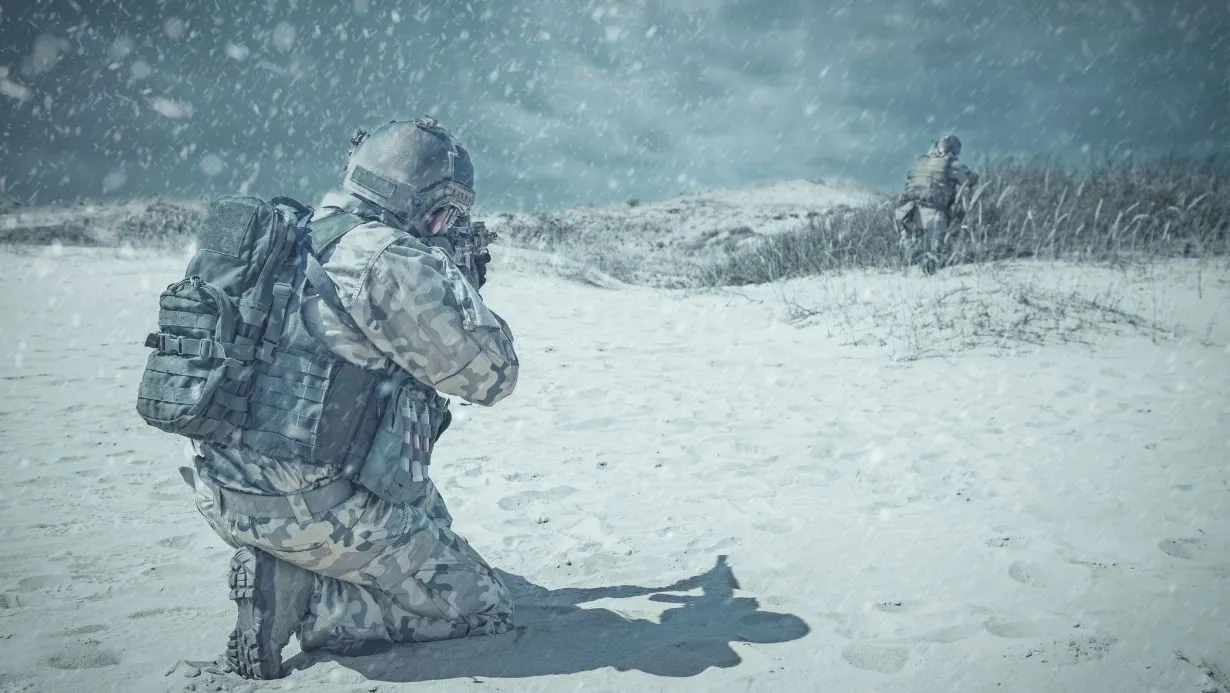Discover how Ukraine harsh winter have become a formidable weapon against Russia’s army in this detailed analysis in this report.
According to last year’s cold season, there will likely be limited territorial movement in the months ahead in Russia’s war in Ukraine.
Even if Kyiv’s forces don’t break through the enemy lines, they could still inflict significant damage on Moscow’s army throughout the winter, according to a land warfare expert. By pushing into opportunities rather than battering their defenses so this also works as winter weapon for Ukraine, Russian forces could be dragged out into the cold.
During the previous winter, there was a clash between the two militaries along a mostly unmoving front line that extends for hundreds of miles in eastern and southern Ukraine. Numerous casualties resulted from the intense fighting around Bakhmut, a city devastated by war in the Donetsk region.. Throughout this cold season, Russia constructed intricate defensive structures and fortifications which have hindered Ukraine’s advances during their summer counteroffensive thus far.
In an analysis of Ukraine’s winter fighting preparations, Jack Watling, a senior research fellow for land warfare at the Royal United Services Institute (RUSI), wrote that if Kyiv doesn’t keep pressure on Russia’s forces, its defenses could become even more troubling, since it could further strengthen its positions along the frontline and for Ukraine it works like winter weapon.
“Kyiv must balance reconstitution with keeping pressure on Russian forces,” he said.
Watson wrote that Ukraine has several concerns heading into winter, including maintaining air defense systems and keey shells.ping ammunition stocks high to punish enemies. In recent months, Kyiv has used a large amount of ammunition, straining both its own supplies and those of its Western military supporters. In response, the US has increased production of artiller. However, they have also had to find other options to help Ukraine achieve the same level of damage with fewer resources. One solution was providing them with highly efficient but contentious cluster munitions. Additionally, NATO’s assistance packages still prioritize improving air-defense capabilities.
The Russian military has also increased its ammunition supply, enlisting the assistance of its own defense industry and foreign allies such as North Korea, as well as its missile and drone production. In the coming months, experts warn that these weapons could be used to overpower Ukraine’s air defense system and conduct more severe attacks on its civilian infrastructure.This heartless approach would mirror Russia’s actions from last winter, during which they heavily utilized one-way explosive drones made in Iran to instill fear in Ukrainian citizens and cities.
Ukrainian forces have recently achieved success in long-range strikes. At the end of the summer, Kyiv used British and French Storm Shadow/SCALP-EG cruise missiles to damage high-profile buildings, shipyards, and naval assets on the occupied Crimean peninsula and Russia’s Black Sea Fleet.
The Ukrainian army recently revealed its new MGM-140 Army Tactical Missile Systems, or ATACMS, that it secretly acquired from the US, which destroyed helicopters and other military hardware on Russian airfields.
Ukraine can use ATACMS to strike deep behind enemy lines without exhausting its limited supply of Western cruise missiles or making significant territorial gains, according to experts. A longer-range strike can be used to create vulnerabilities.
It is possible that Ukraine will not be able to pull off a massed breakthrough, given the current battlefield conditions, but they can shift away from pushing through heavily defended sectors and exploit gaps along a wider front line to attract the enemy into fights of opportunity and force Russian soldiers to stay out in the bad weather to bleed the army through combat and climactic casualties.
The recent attacks across the Dnipro, for example, have increased the frontage that Russian troops must defend, which limits the number of forces that can be withdrawn, trained, or reconstituted. Russian commanders cannot simply trade space on their flanks because actions that make progress where they have left themselves vulnerable can be quickly exploited.
Russian losses can be maximized once again during the winter,” he said. The Russian forces will be outside and getting wet and cold if they are drawn into the defence along a wide front, while Ukrainian troops push into opportunities rather than attempting to break through defended areas.
Last winter, Moscow’s forces sustained heavy casualties, especially during the Wagner Group mercenary campaign that led them to take Bakhmut. Nearly 300,000 Russian soldiers, not including Wagner, have died, been permanently wounded, or were temporarily wounded fighting for Russia since its full-scale invasion began last year, according to a recent intelligence update from the British defense ministry.
Also Read:
